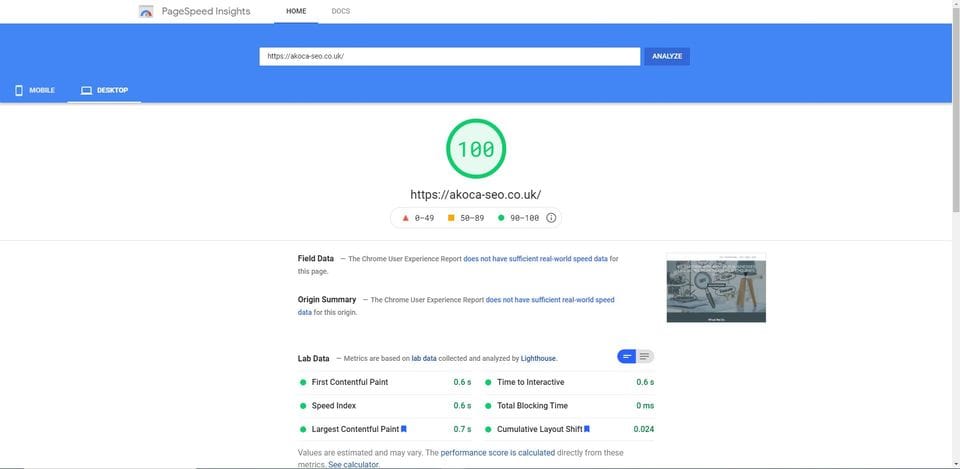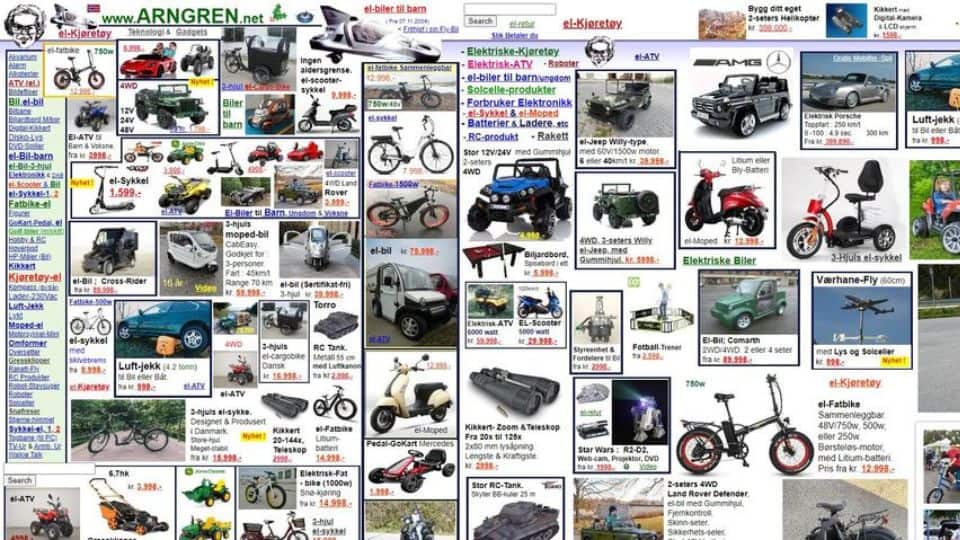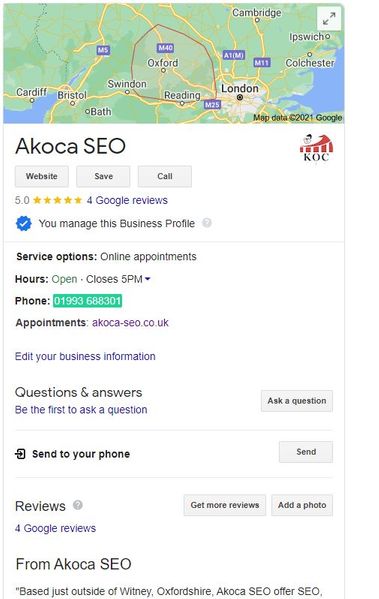Having your businesses new website go live is a big milestone and can often feel like the end goal. Depending on your needs, that very well may be the case, however for most, this is far from the truth!
Ensuring your website is optimised for search engines and/or having a PPC campaign set up are great methods for sending traffic to your website. This, coupled with a website which is optimised for conversions can greatly aid your sales process and overall, your business.
Imagine, new enquiry’s day in and day out, a finely-tuned, (conversion rate optimised) machine – a great asset to any company. But what if the opposite is true? Well that’s obvious – less (if any) conversions!
What we’ll cover in this post is the 13 key things you should look out for to ensure your website converts as much as possible, we’ll attempt to answer “How do you optimize conversion rate?” So let’s go…
1) Your Website Is Too Slow!
How many times have you clicked on a link, only to lose your patience and leave before it has finished loading? According to a study by Statistic Brain the attention span of the average human has shrank from 12 seconds back in 2000 to 8 seconds in 2015 – That’s shorter than a Goldfish. This could be a good indicator as to why Google have now made this a ranking factor for websites in 2021. At the end of the day, if your website takes forever to load, visitors will click off. Take steps to ensure your site is running as fast as can be, you can test your site’s speed here. 
2) Your Website Isn’t Mobile Optimised
As of 2020 data suggests that over 90% of the worlds internet population used a mobile device to go online – That’s a huge amount. Imagine losing out on a high ticket client, simply because your website loaded something funky on their iPhone instead of something optimised for them. This shouldn’t happen, if your website isn’t optimised for mobile devices this should be high on your priority list.
3) Your Layout Needs Improvement – Reduce The Clutter!
Have you ever landed on a page which has far too much going on? Too many links, too many pop ups, too much noise. We know that sites which do this likely want their visitors to have access to all this information however, having too much going on is counter productive. Web design in this day and age should be about smooth experiences. What we mean by this is that any landing page, or page on your website for that matter, should be simple, relevant and easy to navigate. Having images, banners and buttons are fine, just ensure that you’re not bombarding your visitor with too much information all at once. Take a look at the image below to see an extreme example of what we mean, a picture paints a thousand words as the old expression go’s….

4) There Is No Clear Path
Leading on from how it’s important to avoid excess clutter, it’s also important to clearly define the route you would like your visitor to take. If you have a specific goal in mind, such as capturing details via a contact form or selling a physical product on your store, then it’s a good idea to make this as easy as possible.
5) Your Missing A CTA (Call To Action)
Call to actions are a must for any landing page in which you have a goal in mind. What is a call to action? These can be a number things but usually come in the form of a button which directs the prospective customer of yours to a contact form. It’s essential that you have CTAs placed strategically on key pages in order to give your prospective customer plenty of opportunities to proceed down the next stage of the funnel. If you are already making use of CTAs it may be worth considering how you are phrasing things. On this article by Hubspot, they have an example of just how important the wording of things can be. In the article, a simple change of wording on a CTA from “order information and prices” to “get information and prices” resulted in a 14.79% increase in conversions. These “micro wins” are what you should be striving for.
6) Your Content Isn’t Engaging Enough
Having content which is boring or worse – DOESN’T MAKE SENSE, is going to kill your conversion rate. As you’ve likely heard, content is king. Having content which demonstrates your expertise within the industry, shows you understand your customers and is written to persuade should be the aim here. If your writing skills aren’t quite up to scratch or if you don’t have the time to write content, consider sourcing a copywriter who will be able to aid you with this.
7) You’re Not Addressing Obvious Objections
Objections happen, that’s human nature, there isn’t much you can do to stop this. What you can do is understand common objections to your offer and have drills/systems in place to overcome these. Your website is no different. For example, we know that a common objection for ourselves is that SEO can take quite a bit of time before you see an obvious result. We’ve addressed this objection within the FAQ section of our SEO Services landing page. It’s a fair point that SEO can often take some time, this doesn’t mean that it isn’t worth doing though. What it does mean is that if there is a concern about time, then SEO may not be for them. This is why we’ve preempted the objection and have stated that PPC may be a better alternative. By being aware of your most common objections, you can address them right there on your website, if your visitor is having doubts, you’ve quelled them there and then. 
8) Your Value Proposition Isn’t As Tempting As It Could Be
A strong value proposition can be the thing which tips the scale in your favour in the competitive digital field we are in. There are several methods you can employ when it comes to this, we’d suggest checking out Robert Cialdinis’ Influence, the psychology of persuasion if you’ve not had the chance. Essentially, this is usually a case of applying scarcity to your offer ie: limited-time discount or Bookings going fast etc. It’s worth mentioning that this doesn’t have to be fabricated or “unethical” it’s simply a case of informing your visitors of how your company is currently operating. Whether or not you have any special offers on right now or how your calendar is looking if you’re a service based business for instance.
9) You Have Too Much “Gated” Content
“Gated” content can be a good way to capture information (usually a name or email address) from visitors on your website. This is usually done as some form of lead magnet ie “download your free ebook/pdf, just give us your email address first”. Depending on your industry and your goals, this may suit your needs well. However generally it is a good idea to keep “gated” content to a minimum. The last thing you want to be doing is adding time to the users visit when you’d like them to fill in a contact form – If they’re short of time, they’re likely going to bounce.
10) The Checkout Or Capture Process Is Too Long Or Complicated
For businesses offering a physical product the checkout process is often the end goal on their website. If you have have offers popping up or additional clutter, this should be avoided. Stick with keeping things simple ie; anything which is necessary, nothing which isn’t. For businesses offering a service, it is usually a case that capturing prospect details is the end goal. Likewise, you should keep things to a minimum where you can. A neat trick is to have different types of contact forms for visitors to fill out. One for anything detailed required, and another to capture the bare details needed for you to get the ball rolling. Giving visitors some choice in the matter can help conversion rates – filling in field after field of contact forms should be avoided.
11) Your Lacking Social Proof
Again, referring back to Robert Cialdinis’ Influence, the psychology of persuasion Social proof is a huge factor as to whether somebody trusts your company or not. Think about it, you’re at the bar and the lads order a beer, unless your me, you’re not going to be the one ordering a sex on the beach by yourself. But how do you apply social proof to your website? Easy (he says), this can be done with the use of reviews or testimonials – everyone loves a 5 star review right?

12) You’re Not Making Use Of All The Tools In Your Arsenal
With the way websites have progressed there are ALOT of methods you can apply to your website to increase conversions. Are you making use of Video? What about Exit intent pop ups? Do you have Google Analytics installed or other Heatmap software such as Hotjar or MS Clarity? If you’re not making use of these tools, then consider implementing and testing them on your website.
13) You’re Not Aware Of What You’re Doing Wrong (Or Right)
Following on from tracking software like Google Analytics, plenty of websites still don’t understand their user behaviour. Google Analytics can aid with this to give you a better understanding of which pages are performing well, and which aren’t. In addition, simply going through your websites pages often can help to identify any errors which you might not have been aware of. In addition to analytics, when making changes to your website, these should be done in a controlled manner so that you know whats worked aswell as what hasn’t. Google Optimize is a great, free tool to allow you to test any changes on your website.
Conclusion
In Conclusion, we’ve covered the topic of common problems which could be impacting your conversion rate. Take a look at your website to see how many of these issues pop up, if you’re feeling up to the task you can make some adjustments and measure the results. If you’d like us to take a look at your website for a personal proposal then get in touch – we’d be happy to help!




0 Comments